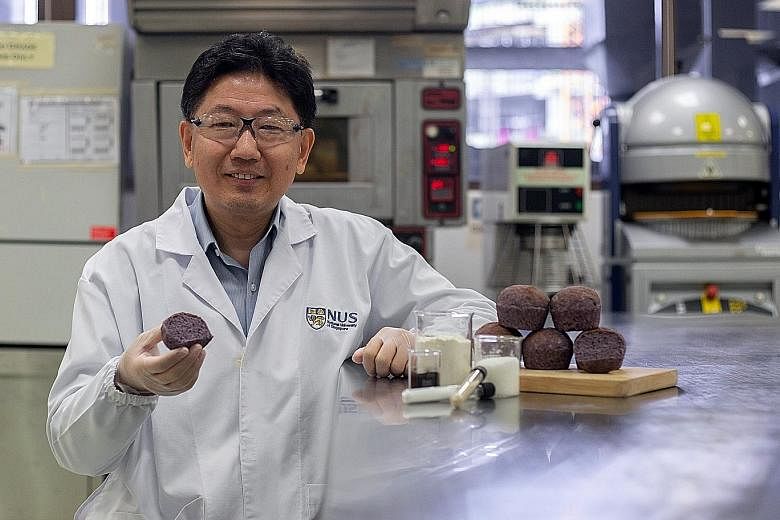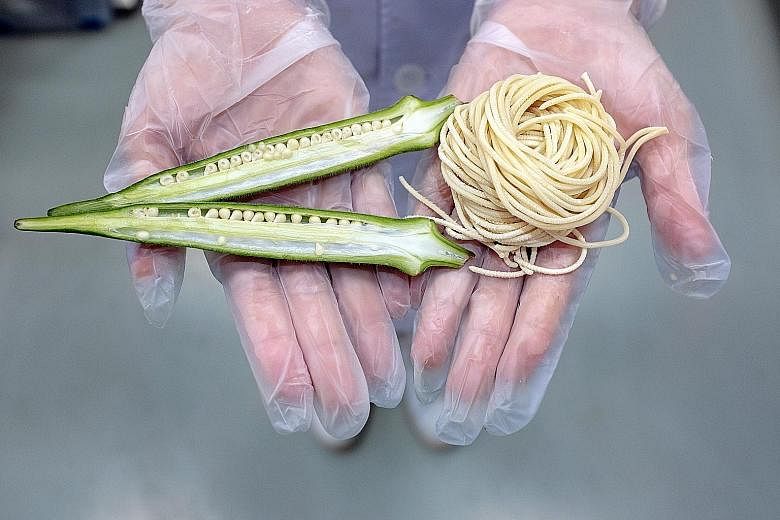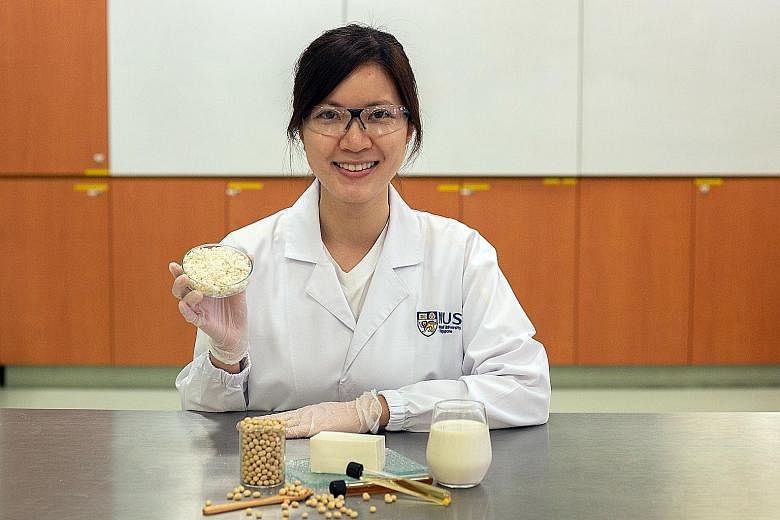Singapore has declared war on diabetes. Among the initiatives to combat the disease, the Ministry of Health has set aside $15 million to support the food industry in developing lower-sugar desserts, sauces and beverages, while the Health Promotion Board aims to help Singaporeans cut their sugar intake by nearly a quarter by 2020.
It is interesting that both recent efforts focus on battling diabetes on the food front.
While there are multiple risk factors leading to the development of diabetes, dietary choices are undisputedly a key contributor. Unlike genetic factors, diet is an area that people can take charge of. Making healthier food choices has been widely advocated for years.
However, healthy food is not always readily accessible and available.
Changing dietary habits does not always mean certain ingredients that make dishes tastier have to be taken out, or that people have to totally avoid some foods which are deemed unhealthy. A viable alternative is to use ingredients that function favourably, and perhaps more desirably, to effectively mitigate risk. This is where the concept of functional foods comes in.
Functional foods are foods that provide health benefits beyond basic nutrition. They are not drugs, although they contain biologically active components that could enhance health and reduce the risks of certain diseases, or address specific nutritional needs.
Functional foods are eaten as part of a person's normal diet. One example is breakfast cereals which have been fortified with beta-glucan, a type of soluble fibre that has been shown to lower low-density lipoprotein cholesterol, or the "bad" form of cholesterol, in blood.
The term "functional foods" first came about in 1993 in an article in prestigious scientific journal Nature which described an effort by the Japanese government to explore the interface between food and medical sciences in the 1980s.
In scientific literature, the concept of functional foods can be traced back to the "father of medicine", Greek physician Hippocrates, who once said: "Let food be thy medicine and medicine be thy food." The written record of this statement first appeared in the second century.
Interestingly, this notion of food as medicine appeared even earlier in oriental culture and philosophy. It was documented that in ancient China's Western Zhou dynasty (1,000BC), the royal family was served by four different doctors and the first one listed was a "dietary physician". Around 500BC, in the famous medical text Inner Canon Of Yellow Emperor, it is stated clearly that food and medicine were the same.
In other parts of the world, folk or traditional medicines are often closely related to the broad concept of functional foods, such as jamu in Indonesian and Malay cultures, and ayurveda in Indian culture.
However, it is wrong to assume that all the recipes developed thousands of years ago are valid and can be fully trusted. Many may not be, yet there are also many that have been handed down through generations and have proven effective.
Herein lies the intriguing challenge for today's food scientists. At the Food Science and Technology Programme at the National University of Singapore (NUS), we place a strong emphasis on developing nutritious food products with safe and sustainable techniques. In our quest to develop modern functional foods that are scientifically proven to be beneficial to health, what clues and directions can we draw from the wisdom of recipes invented long ago?
Several years ago, my team found that a type of natural plant pigment called anthocyanin, which gives black rice its black-purple colour, can slow down the digestion of starch. The medicinal functions of black rice were documented in a traditional Chinese medicine book Compendium Of Materia Medica, which was completed in 1578, although those documented functions are not diabetes-related. We formulated a recipe to make diabetic-friendly bread with anthocyanins. This purplish bread tastes like white bread but can be digested at a slower rate, hence improving blood glucose control. It is also high in antioxidants. Late last year, NUS licensed the rights to market the bread to a local food technology start-up.
Today, diabetes affects one in nine Singaporeans. As consumers become increasingly more health-conscious and have a deeper appreciation of the adage "you are what you eat", demand for functional foods is gaining momentum. Many food manufacturers are intensifying their research and development efforts to meet these preferences.
Concerted efforts by various stakeholders - food scientists, food manufacturers, governments and educators, as well as consumers themselves - are needed to fully reap the health benefits of functional foods.
While food scientists play a core role in creating next-generation, evidence-based functional foods, we need responsible food manufacturers to produce them.
Government regulations have to be in place to ensure that only credible functional food products are available in the market, and this will raise consumer confidence. Through education, consumers are more well informed about the benefits of functional foods and hence, are likely to include more of such foods in their diet.
In recent years, we have seen a growing interest in functional foods, especially in South-east Asia. The development of the functional food sector worldwide is also going in the right direction.
In future, consuming food as medicine could well become ingrained in many of us.
• Professor Zhou Weibiao is director of the Food Science and Technology Programme at the National University of Singapore's Faculty of Science. He has been elected as a fellow of the International Academy of Food Science and Technology, and holds fellowships at the Australian Institute of Food Science and Technology , the Royal Society of Chemistry in the UK, and the Singapore Institute of Food Science and Technology.
Plant substances with health benefits
South-east Asia is one of the world's most diverse botanical regions. Its wide array of plants is a treasure trove of natural compounds that could be elixirs of good health.
Over the last decade, Associate Professor Huang Dejian and his team from the National University of Singapore's Food Science and Technology Programme have developed a database of more than 500 plant samples. The team analysed these plants and uncovered around 20 natural bioactive substances which could have health benefits.
The leaves of the Malay cherry plant, for example, contain substances that can slow down the digestion of food. The NUS team found that noodles made using flour and extracts from the leaves are digested more slowly, making them potentially suitable for diabetic patients.
In addition, the scientists identified a compound called dracoflavan B in dragon's blood - a resin from a type of palm tree known as Daemonorops - that could potentially be used for controlling high blood glucose.
This novel compound is as active as acarbose, which is an anti-diabetic drug used to treat Type 2 diabetes, and may serve as a natural alternative for diabetic patients.
In another study, the seeds of okra - commonly known as ladies' fingers - were found to contain a group of natural substances called proanthocyanidins, which is more potent than acarbose. NUS researchers are now using the seeds of okra to develop rice noodles suitable for diabetic patients.
The scientists are also studying the plants in the Healing Gardens within the Singapore Botanic Gardens, and the Sarawak Biodiversity Centre in Kuching with the hope of unearthing more bioactive components that could be incorporated into food products.
Giving new life to soya bean waste
It would normally be discarded, but scientists have given okara - the residue from the production of soya milk and tofu - a new lease of life by adding enzymes and microbes, which make it more nutritious and taste better.
In Singapore, about 10,000 tonnes of okara are produced annually. While fresh okara smells grassy and tastes bland, it turns bad easily, and will then smell like sweaty socks and taste sour. It is usually disposed of by soya food producers.
To reduce food waste, Associate Professor Liu Shao Quan and his PhD student, Miss Vong Weng Chan, who are both from the National University of Singapore's Food Science and Technology Programme, devised ways to put okara to good use.
They experimented by fermenting okara with 10 different yeasts that are typically used to make cheese and wine.
With the Lindnera saturnus yeast, they got lucky: Okara fermented by this yeast gains a pleasant fruity smell.
With the improved aroma, okara could potentially be used as a functional food ingredient, or as an inexpensive material for flavour extraction, they believe.
The researchers also used a combination of natural microorganisms and enzymes to enrich the nutritional value of okara and enhance its flavour. After the transformation, the enhanced okara contains more soluble fibre, which helps to maintain gut health, and its texture becomes finer as its insoluble fibres are broken down.
In addition, the enhanced okara gains a meaty taste, making it suitable for a variety of food products, such as baked goods and meat substitutes.
The research team is now working on developing functional food products using the enhanced okara.



